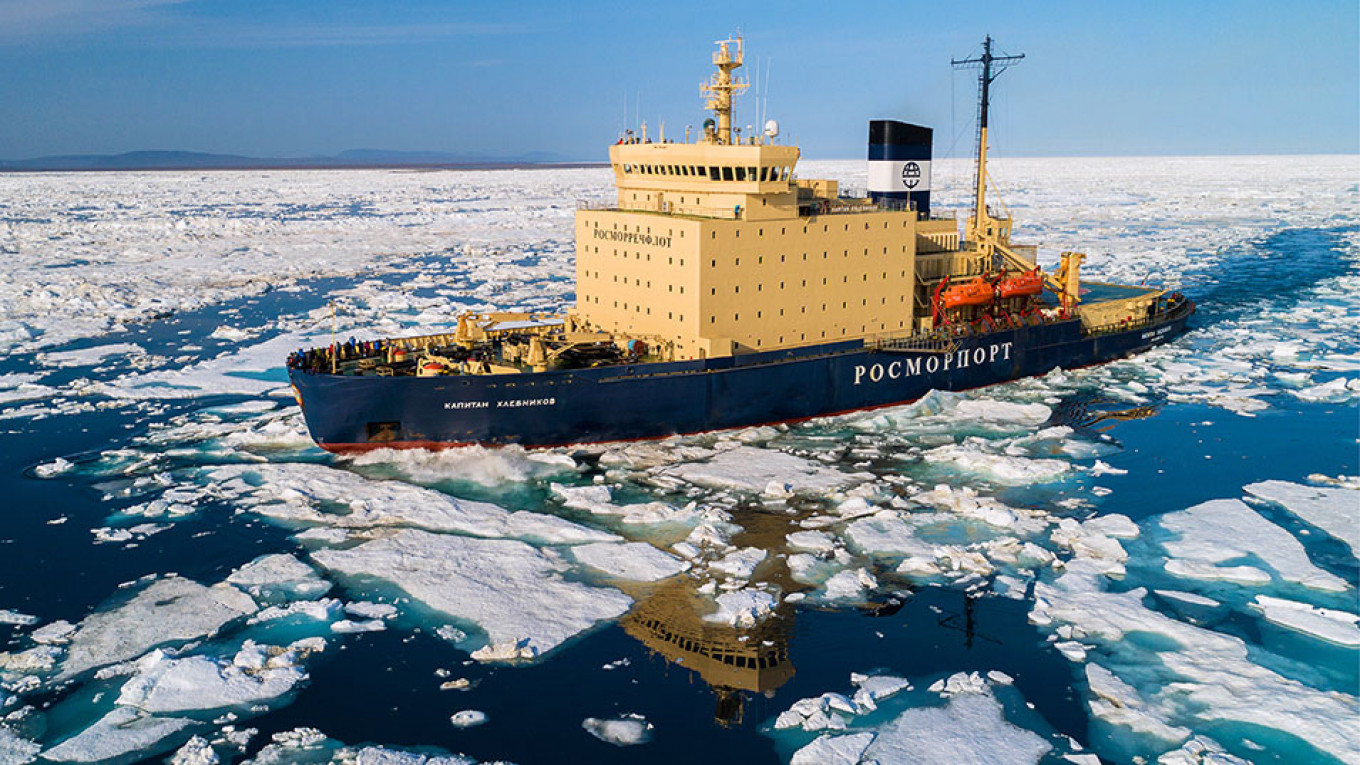
The number of ships escorted by Russian icebreakers along the Northern Sea Route increased by 54% between 2018 and 2019.
The increase in ship escorting is caused by an increase in LNG production on the Yamal Peninsula, Rosatomflot, the company managing Russia’s fleet of nuclear-powered icebreakers, said.
The 510 vessels that were escorted through the Arctic ice had a total gross tonnage of 30.29 million tons, Rosatomflot says. That is 54% more than it was in 2018 when 331 vessels with a total tonnage of 12,7 million tons were carried out through the area.
“It is connected with the full project capacity reached by the LNG production plant in Sabetta port,” General Director at Atomflot Mustafa Kashka said.
Meanwhile, the total volume of goods shipped on the route in 2019 is still unknown. In mid-November 2019, Rosatom said that goods volumes had reached 26 million tons and that by the end of the year it was expected to reach 30 million tons.
Today, Russia has a total of four nuclear-powered icebreakers and a nuclear-powered Sevmorputcontainer carrier in operation.
A new fleet of icebreaking vessels is in the process of construction. The vessels like LK-60 Arktika, Sibir and Ural are to be delivered in 2020, 2021 and 2022 respectively. In addition, two other LK-60 vessels and three Lidersicebreakers are to be built.
According to Russia’s new development plan for the Northern Sea Route, the first Lider will be ready for sailing in 2027.
The enhanced icebreaker capacity will help Russia to reach its target of 80 million tons of goods on the Arctic route in 2024. This number could reach 157 million tons in 2034, Natural Resources Minister Dmitry Kobylkin said.
